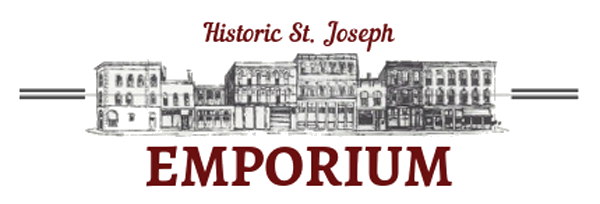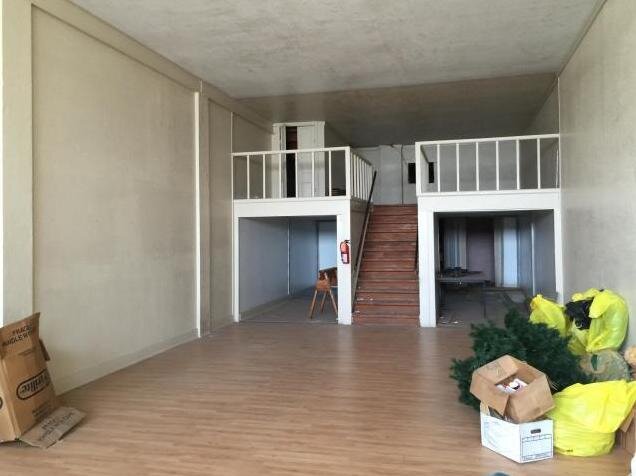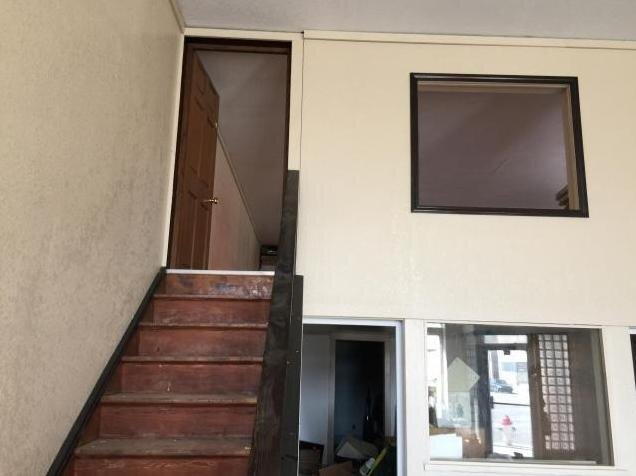Purchase Price $650,000
20,000 sqft
This 20,000 historic commercial space has been updated on the interior to make it appropriate for a wide range of uses. The only limitation is your imagination! MLS #2146106
Contact: Frank Leone, Berkshire Hathaway Home Services,
Call: 816-387-1996
The history of this amazing building:
In 1890, St. Joseph was a boomtown! The population was growing. Increasing wealth was pouring in to the city. And all that meant that there was increasing need for a more professional police force with an imposing headquarters. As was so often the case in this period, city officials turned to prominent St. Joseph architect E.J. Eckel and his partner George Mann to design something to be proud of. Luckily, working in the office at this time was the wildly creative (and somewhat troubled) Harvey Ellis who was making his name designing imposing structures in the Richardsonian Romanesque style. Their initial bid for the project was $11,700 but they were convinced to reduce the cost to $10,000. They broke ground for the structure on September 7, 1890 and the building “was under roof and enclosed” before winter struck.
The City was rightfully very excited about the construction of their new Police Station. On August 19, 1890 the St. Joseph News-Press/Gazette published a quite detailed of how the interior of the building would be configured when complete: “The very best of brick will be used in the construction of the building, and the wood work will be handsome in design and of great durability. The building will be 50 by 90 feet, with the main entrance on Messanie street. An entrance to the building will also be provided for on Seventh street. The structure will be two stories high, with large attic and basement. On the ground floor a driveway 12 feet in width will run through the entire building, so that a patrol wagon in coming into the building will be enabled to pass through to the stables or out into the streets. On the west side of this driveway immediately at the front entrance, will be the police captain’s office, 16 by 18 feet. Following this will be the guard’s room, 18 by 20 feet. Adjoining this will be the roll call room, 18 by 30 feet. On the east side of the driveway, directly opposite the captain’s office, will be the main stairway leading to the second floor. Back of this stairway, on the east side of the driveway, will be four large cells, 10 by 16 feet in size. At the rear end of the building will be a private stairway leading to the second floor. At the north end of the structure will be a room, 24 by 50 feet, for the use of patrol wagons.
“On the second floor of the building there will be a large hallway the entire length of the building and leading to the police courtroom in the rear end. On the west side of this hall at the south end will be the private room of the chief of police, 9 by 18 feet in size, following which will be the chief’s office, 12 by 18. Adjoining this will be the office of the secretary of the police commission, 18 by 20 feet. The board of police commissioners will use the room adjoining, which will be 18 by 30 feet in size. On the east side of the hall, at the north end of the building, will be the office of the city attorney, 12 by 18 feet in size, which will be used for storing away things of value. At the rear end of the building will be the police court-room 24 by 40 feet in size, and a private office for the recorder 12 by 18 feet. On the third floor will be the drill room, 52 by 90 feet in size, covering the length and width of the building. On the Messanie street front will be a small tower of very pretty design. The building will be heated by steam and provided with electric lights. It will also be furnished throughout with a view to comfort and convenience.”
Very quickly the building became a hive of activity and all sorts of individuals – on both sides of the law (and sometimes in between) – came through its doors. Even before the formal dedication of the building (on December 30, 1891) the characters of St. Joseph were being housed in the cells. On December 14, 1891 The St. Joseph Herald reported that “Three Old Cronies” had been arrested and taken to the Central Police Station for public drunkenness. In January 1892, 26 homeless men “vags” were allowed to sleep in the cells as they had not enough money to secure shelter and were needed for the ice harvest.
In 1908 it was decided that the size of the Central Police Station was no longer sufficient to meet the needs of the city. A bond initiative was passed yielding $10,000 for expansions to the structure. The initial plan was a complete renovation of the building, but thankfully saner heads prevailed and the decision was taken to build a two-story addition, which was to include “a courtyard and skylight diving the cells from the addition. . . [to] furnish more ventilation and better light for the prisoners.” In order to accommodate the expansion the east wall of the original building was removed at ground level and structural steel supports installed. At this time they replaced the iron floors of the cells with poured concrete. The addition also included matron’s quarters, holding cells for women, and a new padded cell. The police occupied the addition at the end of June 1909.
It was this configuration that continued to serve as the hub for law enforcement in St. Joseph for the next two decades. In 1939, the Police Department moved to a new headquarters building at 9th and Mary.
Following the decampment of the police, the structure served a variety of uses over the decades. Following WWII a U.S. Marine Corps howitzer unit was in residence. Other uses have included a bag factory and a taxi company. In mid 1989 the National Military Heritage Society purchased the structure and opened a museum. That museum closed in 2016 and since that time the building has been waiting for the next chapter in its story.
701 Messanie is listed on the National Register of Historic Places and is eligible to be listed as a Local Landmark. Thus it is eligible for both federal and state historic tax credits and local grants such as the Save Our Heritage grant.









